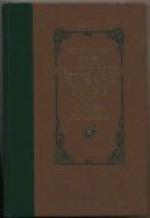|
This section contains 5,457 words (approx. 19 pages at 300 words per page) |

|
SOURCE: "Artemus Ward and Mark Twain's 'Jumping Frog'," in Nineteenth Century Fiction, Vol. 28, December, 1973, pp. 273-86.
In the following essay, Rodgers surveys some of the notable scholarly interpretations of Twain's jumping frog story before arguing that the sketch can be best understood in the context of Twain 's relationship to the man to whom it was addressed: Artemus Ward.
Over the last four decades, students of Twain's "Jumping Frog" sketch of 1865 have made their chief advances by working outward from the dramatic center of the tale, shifting their attention from Jim Smiley and his fateful frog to the ambiguous figure of Simon Wheeler, Smiley's garrulous memorialist, and finally to Mark Twain himself, the frame narrator, who introduces Wheeler's monologue.1 As the purview broadened, wheels within wheels came to light: unsuspected structural complexity, "unreliable" narration, rhetorical finesse of the first order, paradox and irony, the possibility of parabolic authorial...
|
This section contains 5,457 words (approx. 19 pages at 300 words per page) |

|


